Staying the course on federal fuel economy and emissions standards, vehicle electrification and all its challenges, and advancements in clean vehicles and fuels, were key themes addressed at this year’s Advanced Clean Transportation (ACT) Expo in Long Beach, Calif.
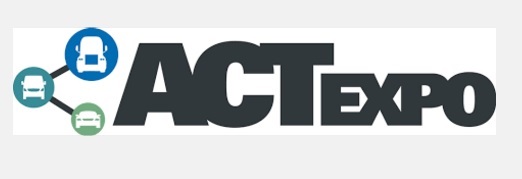 Keynote speakers at “Global Trends Accelerating Advanced Transportation Innovation” on Tuesday morning said they would prefer to see that the single national emissions standard launched during the Obama administration stay in effect during a time when the Trump administration prepares to roll back the federal fuel economy and emissions standards. Mary Nichols, chairman, California Air Resources Board; Steve Gilligan, vice president, product and vocational marketing, at Navistar; Tamara Barker, chief sustainability officer and vice president of environmental affairs at UPS; Julie Furber, executive director of electrification at Cummins; and James Burrell, assistant vice president, advanced powertrain group, American Honda Motor Company, Inc., spoke to the issues.
Keynote speakers at “Global Trends Accelerating Advanced Transportation Innovation” on Tuesday morning said they would prefer to see that the single national emissions standard launched during the Obama administration stay in effect during a time when the Trump administration prepares to roll back the federal fuel economy and emissions standards. Mary Nichols, chairman, California Air Resources Board; Steve Gilligan, vice president, product and vocational marketing, at Navistar; Tamara Barker, chief sustainability officer and vice president of environmental affairs at UPS; Julie Furber, executive director of electrification at Cummins; and James Burrell, assistant vice president, advanced powertrain group, American Honda Motor Company, Inc., spoke to the issues.
California and 16 other states had announced that morning that they have jointly sued the U.S. Environmental Protection Agency over EPA Administrator Scott Pruett’s decision to roll back standards for vehicles built from 2022 through 2025. While the feedback period has been reopened by the Trump administration, the EPA administrator is preparing to cut back the standards with the argument that they’re too difficult for automakers to achieve.
ACT Expo 2018 was a platform for several significant announcements:
Electric trucks: Battery technology is improving so rapidly, it is becoming more realistic to expect faster adoption of commercial battery electric vehicles (CBEVs), according to Mike Roeth executive director of North American Council for Freight Efficiency (NACFE). Roeth gave a presentation on a guidance report released May 1 at the conference by NACFE analyzing the interest fleet owners have in electric trucks and the challenges faced to transition over from diesel to electric. Fleets using EVs for urban delivery in predictable routes between 50-100 miles per day are likely to be the first adopters of electric trucks and vans as the industry norm, according to the study.
Several speakers and panelists during the week addressed the issues that vehicle electrification faces in fleet adoption. One of these concerns is substantial growth needed in the charging infrastructure that faces challenges in funding, securing space on real estate properties, and meeting building code enforcement.
Meritor and Blue Horizon: Jay Craig, CEO and president of Meritor, gave a keynote presentation about how Meritor, an automotive components manufacturer, is investing and adapting to clean technologies. Rather than fighting off new clear air standards, his company decided to embrace the technology and move it aggressively to market, he said. Meritor also launched Blue Horizon during ACT Expo, a new technology brand representing the company’s emerging platform of advanced technologies centered on electric drivetrain, efficiency, and connectivity systems. Products offered under the new brand will include integrated electrified solutions for Class 4-8 commercial vehicles across multiple vocations, including pickup and delivery, drayage/terminal tractors, transit and school buses, as well as linehaul and other heavy-duty applications.
Award winners: This year’s winners of the ACT Expo awards recognizing fleet operators who show true leadership in clean transportation were — Total Transportation Services, Inc. (TTSI) in the Leading Carrier category; Stark Area Regional Transportation Authority (SARTA) in Canton, Ohio for the Transit & Mobility category; City of Dublin, Ohio in the Leading Public Fleet category; Bimbo Bakeries USA for Leading Private Fleet; and WallyPark for Leading Airport Fleet.
Propane vehicles: More than 13,000 propane autogas fleet vehicles were sold in 2017, according to data compiled by the Propane Education & Research Council. The new vehicles will annually consume approximately 36.8 million gallons of propane, and many will be displacing fuels with higher emissions like gasoline and diesel. “Propane autogas overcame significant challenges in 2017 — from the absence of federal incentives for alternative fuels from the federal government, to incredibly low gasoline and diesel prices throughout much of the year — and we received an overwhelming endorsement for our fuel in all markets. Propane autogas sales virtually held steady in a year where the conventional fuels held all of the advantages,” said Michael Taylor, director of autogas business development for PERC.
Clean Cities anniversary: The U.S. Department of Energy’s Clean Cities program will be celebrating its 25th anniversary this year. More than 100 Clean Cities coalitions have collectively saved more than 8.5 billion gallons of petroleum nationally, according to the DOE. Comprised of business leaders and fuel providers, government agencies and community groups, the coalitions continue to support and develop projects designed to cut petroleum use in transportation.
New company name: Trillium CNG has changed its company name to Trillium. The company has been a top supplier of CNG services for more than 20 years and will continue in that space. Company officials simultaneously announced the name change and a partnership with California-based EV Connect, a provider of electric vehicle (EV) charging solutions. “We believe our company name should fully reflect our offerings. By adding alternative fueling solutions like EV charging and hydrogen fueling to our portfolio we are helping customers reduce tailpipe emissions. Pairing those solutions with renewable fuels reduces the total lifecycle emission profile of our customers’ fleets,” said Bill Cashmareck, managing director of Trillium.
California’s investment in clean vehicles: California officials announced that the state has invested more than $1.2 billion into projects that put a growing number of zero-emission and low-carbon buses, trucks, and cars onto California’s roads and highways. About 48% of these investments have been directed toward low-income and disadvantaged neighborhoods – those most in need of improvements in air quality. One of these projects will be delivering dozens of electric school buses to rural school districts to help bring low-carbon transportation to students and drivers.
Electric delivery van: Workhorse Group and commercial vehicle supplier Dana Inc. unveiled a Class 5 van powered by a jointly-built electric axle. The all-electric vehicle is a combination of the chassis and battery pack from a Workhorse E-Gen van, the body of a Morgan Olson UPS delivery truck, and the new Dana axle. The concept vehicle is not yet scheduled for production but interest from potential customers could bring it to market, according to Workhorse.
Fleets using biodiesel: According to a new 2018 Fleet Purchasing Outlook study conducted by the NTEA – The Association for the Work Truck Industry – 75% of fleet respondents planning to acquire trucks in 2018 anticipate maintaining or increasing use of diesel engine powered trucks. Additionally, the survey indicated that biodiesel is now the most popular alternative fuel option on the market, followed by E85, CNG, and electric hybrid. Survey data shows 18 percent of fleet participants use biodiesel now – up from 15% in 2017.
Ultra Clean Diesel: Renewable Energy Group, Inc. unveiled REG Ultra Clean Diesel, a patent-pending fuel blend of renewable diesel and biodiesel. “REG Ultra Clean Diesel is a CARB approved fuel that significantly reduces emissions, blends easily with petroleum diesel, and is one of the cleanest and lowest carbon intensity liquid fuels available,” said REG’s Gary Haer, vice president, sales and marketing. “REG is uniquely positioned to offer both our biodiesel and renewable diesel in a blended product. We are committed to delivering solutions to our customers in support of clean air and sustainability initiatives.”
ROUSH unveils EVs: ROUSH CleanTech unveiled its newest carbon footprint-friendly vehicle — an all-electric vehicle built on the Ford F-650 chassis. The all-electric vehicles will have a lithium-ion battery system of up to 225 kilowatt hours and 700 volts. Depending on the vehicle’s GVWR, the average range will be up to 120 miles with a top speed of 75 miles per hour. “An electric battery option for medium-duty trucks and buses is a great fit as there is increasing demand in this gross vehicle weight range (GVWR) with very few OEM solutions,” said Todd Mouw, president. “This builds from our robust foundation already in place at ROUSH CleanTech that supports more than 1,200 customers and 19,000 propane and natural gas units on the road.”
Peterbilt also goes electric: Heavy-duty truck manufacturer Peterbilt launched its all-electric Model 579. It was built by the company in collaboration with Transpower, the California Air Resources Board, and the Port of Long Beach. The heavy-duty Model 579 truck has been designed as a drayage application tractor that will go into service soon at the Port of Long Beach. It’s got 490 horsepower with a 200-mile range through its battery pack with the options of 350-to-440 kWh of power. The recharge takes up to five hours.
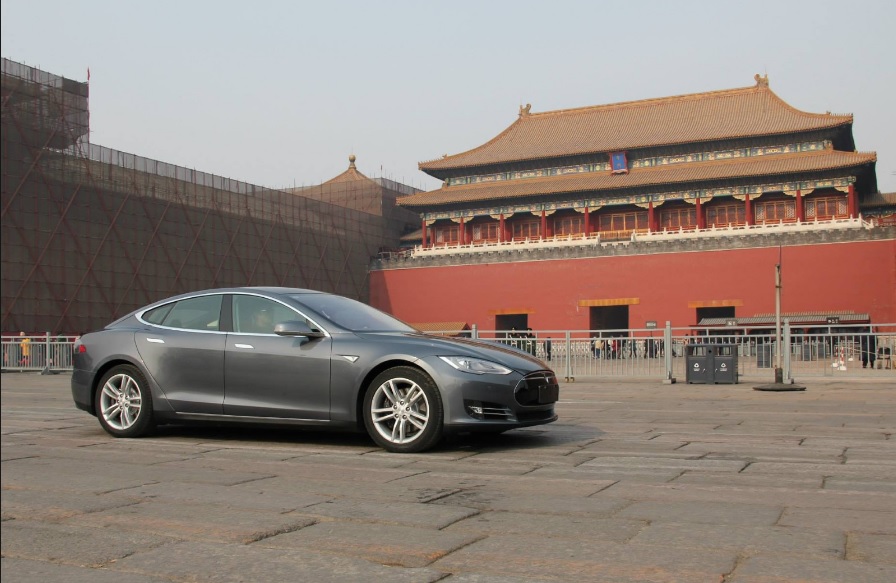 100% of the plant. BMW, which has been in Chinese joint ventures for years, will become the first foreign automaker to own a majority share of a Chinese automobile venture. The trade war continues to escalate, with China on Wednesday vowing to add another $200 billion in U.S. tariffs in retaliation to President Trump’s moves. Tesla CEO Elon Musk made the deal on Tuesday for the Shanghai plant, which the company said will double its vehicle manufacturing capacity. The plant could cost $1 billion to built, and construction will start early next year. Tesla could be the first of many companies setting up shop in one of China’s free-trade zone that sidesteps its typical requirement for joint-ventures with Chinese companies. Beyond expanding the BMW Brilliance Automotive partnership, BMW inked a deal with Great Wall Motor to produce Mini electric vehicles through a new 50:50 joint venture, Spotlight Automotive Limited, which will be dedicated to developing and producing EVs in China.
100% of the plant. BMW, which has been in Chinese joint ventures for years, will become the first foreign automaker to own a majority share of a Chinese automobile venture. The trade war continues to escalate, with China on Wednesday vowing to add another $200 billion in U.S. tariffs in retaliation to President Trump’s moves. Tesla CEO Elon Musk made the deal on Tuesday for the Shanghai plant, which the company said will double its vehicle manufacturing capacity. The plant could cost $1 billion to built, and construction will start early next year. Tesla could be the first of many companies setting up shop in one of China’s free-trade zone that sidesteps its typical requirement for joint-ventures with Chinese companies. Beyond expanding the BMW Brilliance Automotive partnership, BMW inked a deal with Great Wall Motor to produce Mini electric vehicles through a new 50:50 joint venture, Spotlight Automotive Limited, which will be dedicated to developing and producing EVs in China.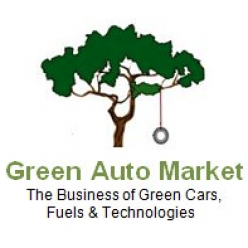



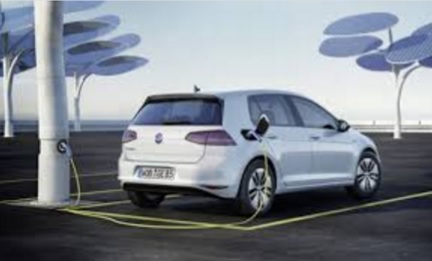 the list, so far securing $422.6 million going toward zero-emission heavy-duty trucks, buses, and charging stations. Texas was second, at $209.3 million, Florida third at $166.3 million, New York fourth at $127.7 million, and Pennsylvania in fifth place at $118.6 million. The next five on the list were Washington state at $112.7 million, Illinois at $108.7 million, Virginia at $93.6 million, North Carolina at $92 million, and Maryland at $75.7 million. School buses are a priority for several states that have received funds. More than 10 states have finalized their plans, according to the Sierra Club. State officials are deciding how the money will be spent meeting guidelines under the settlement. The funding must go towards reducing nitrogen oxides (NoX), a major component of air pollution. Only 15% can go toward the electric vehicle charging infrastructure. The settlement funds are being divvied up based on how many Volkswagen diesel cars with emission-cheating software were registered within each state.
the list, so far securing $422.6 million going toward zero-emission heavy-duty trucks, buses, and charging stations. Texas was second, at $209.3 million, Florida third at $166.3 million, New York fourth at $127.7 million, and Pennsylvania in fifth place at $118.6 million. The next five on the list were Washington state at $112.7 million, Illinois at $108.7 million, Virginia at $93.6 million, North Carolina at $92 million, and Maryland at $75.7 million. School buses are a priority for several states that have received funds. More than 10 states have finalized their plans, according to the Sierra Club. State officials are deciding how the money will be spent meeting guidelines under the settlement. The funding must go towards reducing nitrogen oxides (NoX), a major component of air pollution. Only 15% can go toward the electric vehicle charging infrastructure. The settlement funds are being divvied up based on how many Volkswagen diesel cars with emission-cheating software were registered within each state. new
new 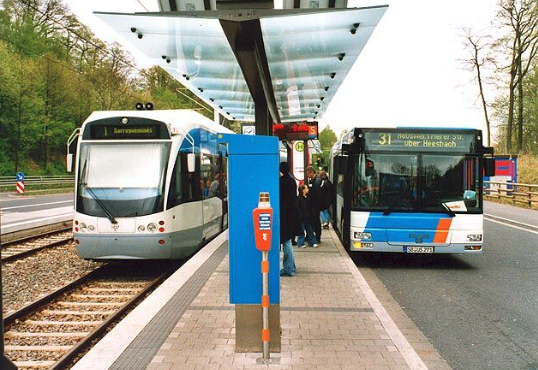 the vote activism from Koch brothers-funded Americans for Prosperity. That group is seeing success fighting against other public transit projects around the country. The Koch brothers want to see public transit go away and government funds go into restoring highways and roads. The Koch Industries conglomerate is a major producer of gasoline and asphalt, and also makes seatbelts, tires, and other automotive parts. The Trump administration had promised to back highway infrastructure funding, but that has faded away. Americans for Prosperity is now filling some of that void. Supporters of transit project investments say that having light-rail and more buses reduces traffic congestion and air pollution in a city. They also see transit as a platform for bringing in more electric and alternative fuel-powered buses. The
the vote activism from Koch brothers-funded Americans for Prosperity. That group is seeing success fighting against other public transit projects around the country. The Koch brothers want to see public transit go away and government funds go into restoring highways and roads. The Koch Industries conglomerate is a major producer of gasoline and asphalt, and also makes seatbelts, tires, and other automotive parts. The Trump administration had promised to back highway infrastructure funding, but that has faded away. Americans for Prosperity is now filling some of that void. Supporters of transit project investments say that having light-rail and more buses reduces traffic congestion and air pollution in a city. They also see transit as a platform for bringing in more electric and alternative fuel-powered buses. The 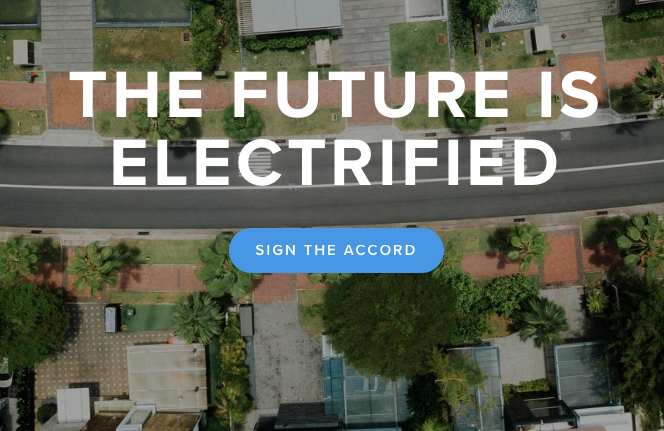 electrification can be moved forward. Principles have been endorsed on building the needed energy infrastructure to guide local, state, and federal policymakers. Other organizations endorsing the accord include CALSTART, Ceres, Consumer Federation of America, Consumers Union, Electrification Coalition, NRDC, Plug In America, Sierra Club, Union of Concerned Scientists, utility companies, and Clean Cities coalitions. Britta Gross, director, GM’s advanced vehicle commercialization policy, said that “the accord lays out the essential building blocks for a compelling energy infrastructure that we can all rely on for decades to come. Innovations in transportation electrification will benefit society as a whole — and cross-industry, multi-stakeholder cooperation is key.”
electrification can be moved forward. Principles have been endorsed on building the needed energy infrastructure to guide local, state, and federal policymakers. Other organizations endorsing the accord include CALSTART, Ceres, Consumer Federation of America, Consumers Union, Electrification Coalition, NRDC, Plug In America, Sierra Club, Union of Concerned Scientists, utility companies, and Clean Cities coalitions. Britta Gross, director, GM’s advanced vehicle commercialization policy, said that “the accord lays out the essential building blocks for a compelling energy infrastructure that we can all rely on for decades to come. Innovations in transportation electrification will benefit society as a whole — and cross-industry, multi-stakeholder cooperation is key.”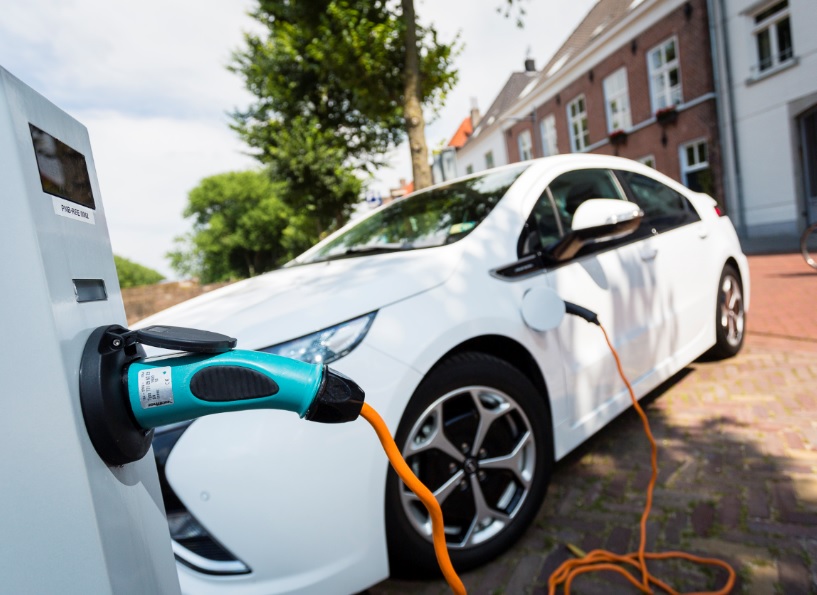 Scorecard, a three-tier ranking system acknowledging plug-in electrified vehicle state-level actions to support adoption of the technology. California, Maryland, and Connecticut made Tier 1; followed by Massachusetts, New York, and New Jersey at Tier 2; and Vermont, Rhode Island, Oregon, and Maine at Tier 3. The coalition used a weighted ranking system and appraised state-level policy actions for three categories: state-provided incentives to consumers; availability and support of public refueling infrastructure; and, outreach campaigns to educate the public. “While there are more than 700,000 EVs on U.S. roads today, electric vehicles are still only about one percent of U.S. light-duty vehicle sales. As state legislatures look to automakers to increase the availability and diversity of PEV models in all ZEV MOU states, the scorecard is meant to be used as a resource for the public and policymakers,” said Ben Prochazka, vice president of the EC. “It’s a tool that can be used to decide whether states should take new, or enhance current, actions that will accelerate consumer demand — in turn catalyzing both vehicle availability and more EVs on the road.”
Scorecard, a three-tier ranking system acknowledging plug-in electrified vehicle state-level actions to support adoption of the technology. California, Maryland, and Connecticut made Tier 1; followed by Massachusetts, New York, and New Jersey at Tier 2; and Vermont, Rhode Island, Oregon, and Maine at Tier 3. The coalition used a weighted ranking system and appraised state-level policy actions for three categories: state-provided incentives to consumers; availability and support of public refueling infrastructure; and, outreach campaigns to educate the public. “While there are more than 700,000 EVs on U.S. roads today, electric vehicles are still only about one percent of U.S. light-duty vehicle sales. As state legislatures look to automakers to increase the availability and diversity of PEV models in all ZEV MOU states, the scorecard is meant to be used as a resource for the public and policymakers,” said Ben Prochazka, vice president of the EC. “It’s a tool that can be used to decide whether states should take new, or enhance current, actions that will accelerate consumer demand — in turn catalyzing both vehicle availability and more EVs on the road.”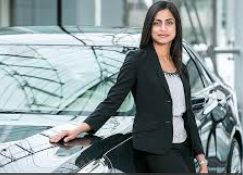 manufacturer has seen both CEO and CFO jobs held by women; and GM is now the second of two current Fortune 500 companies to do so.
manufacturer has seen both CEO and CFO jobs held by women; and GM is now the second of two current Fortune 500 companies to do so. 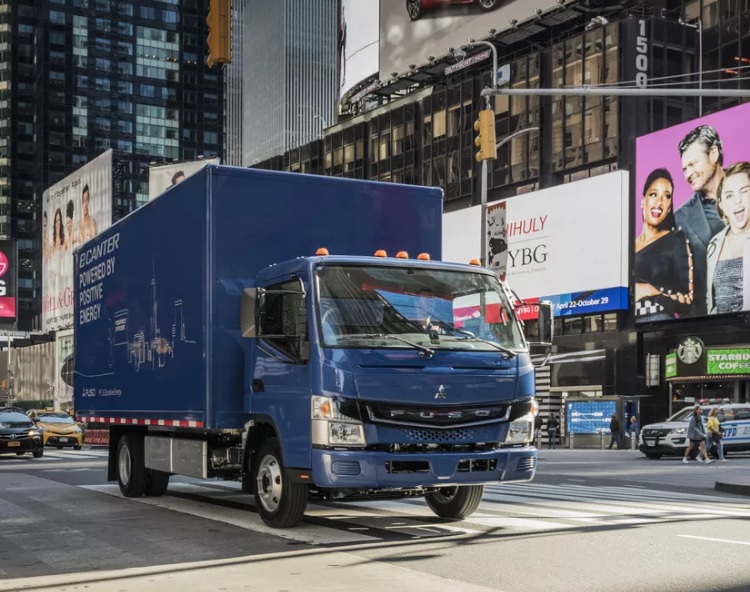 programs will launch later this year, and the company will go to full-scale production by 2021. During an event at Portland International Raceway in Portland, Ore., an electric version of its Freightliner Cascadia heavy-duty truck was revealed, along with an electric version of its M2 medium-duty truck. The eCascadia will go about 250 miles per charge, and the eM2 will go about 230, the company said. Daimler has previously shown off its Thomas Built battery electric Saf-T-Liner school bus and the electric Fuso eCanter delivery truck. “We are the undisputed global leader of the trucking industry and we want to remain in that position with regards to electric trucks,” said Martin Daum, global head of Daimler’s Trucks & Buses division.
programs will launch later this year, and the company will go to full-scale production by 2021. During an event at Portland International Raceway in Portland, Ore., an electric version of its Freightliner Cascadia heavy-duty truck was revealed, along with an electric version of its M2 medium-duty truck. The eCascadia will go about 250 miles per charge, and the eM2 will go about 230, the company said. Daimler has previously shown off its Thomas Built battery electric Saf-T-Liner school bus and the electric Fuso eCanter delivery truck. “We are the undisputed global leader of the trucking industry and we want to remain in that position with regards to electric trucks,” said Martin Daum, global head of Daimler’s Trucks & Buses division.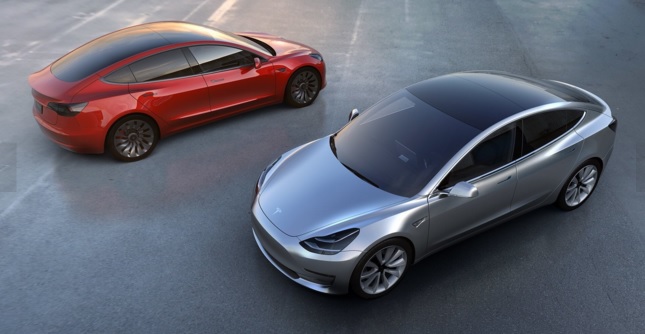 to recommend, said Jake Fisher, CR’s director of automotive testing. The strong rating comes after
to recommend, said Jake Fisher, CR’s director of automotive testing. The strong rating comes after 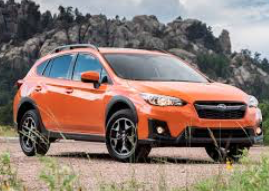 soon be launched, built on the Toyota Prius Prime drivetrain. Subaru has been showcasing EV concepts for years, including the Viziv series. The company launched a conventional gas-electric hybrid version during the 2014 model year. The new version will have a larger battery pack and a plug for owners to charge up their PHEV. It can be driven as a normal hybrid using both gas and electric power, or driven on pure electric drive for local commuting, the company said.
soon be launched, built on the Toyota Prius Prime drivetrain. Subaru has been showcasing EV concepts for years, including the Viziv series. The company launched a conventional gas-electric hybrid version during the 2014 model year. The new version will have a larger battery pack and a plug for owners to charge up their PHEV. It can be driven as a normal hybrid using both gas and electric power, or driven on pure electric drive for local commuting, the company said.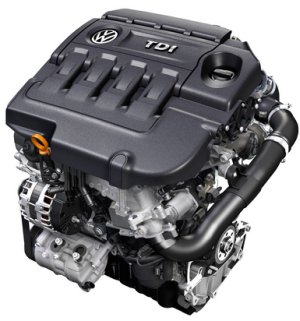 regulators on diesel emissions cheating. VW CEO Herbert Diess has been granted safe passage in the U.S. and advance notice if prosecutors seek to charge him, sources told Bloomberg. Last week, Diess told investors during the company’s annual shareholder meeting in Berlin that
regulators on diesel emissions cheating. VW CEO Herbert Diess has been granted safe passage in the U.S. and advance notice if prosecutors seek to charge him, sources told Bloomberg. Last week, Diess told investors during the company’s annual shareholder meeting in Berlin that  Keynote speakers at “Global Trends Accelerating Advanced Transportation Innovation” on Tuesday morning said they would prefer to see that the single national emissions standard launched during the Obama administration stay in effect during a time when the Trump administration prepares to roll back the federal fuel economy and emissions standards. Mary Nichols, chairman, California Air Resources Board; Steve Gilligan, vice president, product and vocational marketing, at Navistar; Tamara Barker, chief sustainability officer and vice president of environmental affairs at UPS; Julie Furber, executive director of electrification at Cummins; and James Burrell, assistant vice president, advanced powertrain group, American Honda Motor Company, Inc., spoke to the issues.
Keynote speakers at “Global Trends Accelerating Advanced Transportation Innovation” on Tuesday morning said they would prefer to see that the single national emissions standard launched during the Obama administration stay in effect during a time when the Trump administration prepares to roll back the federal fuel economy and emissions standards. Mary Nichols, chairman, California Air Resources Board; Steve Gilligan, vice president, product and vocational marketing, at Navistar; Tamara Barker, chief sustainability officer and vice president of environmental affairs at UPS; Julie Furber, executive director of electrification at Cummins; and James Burrell, assistant vice president, advanced powertrain group, American Honda Motor Company, Inc., spoke to the issues.